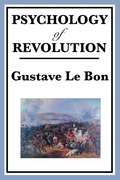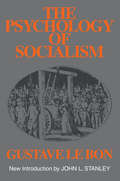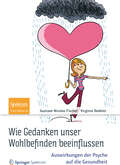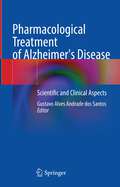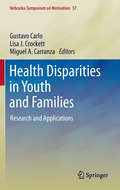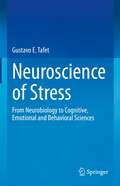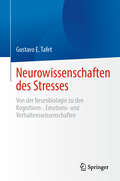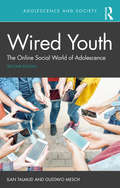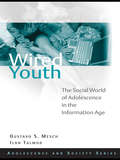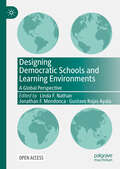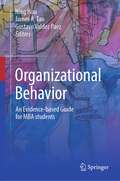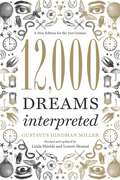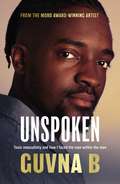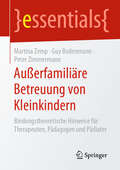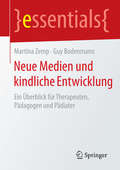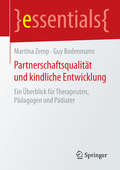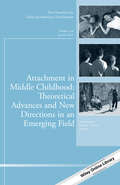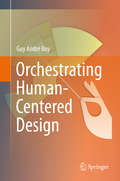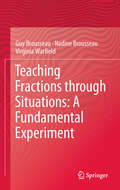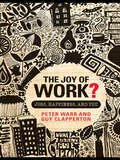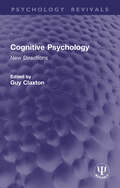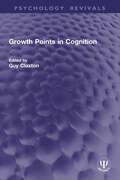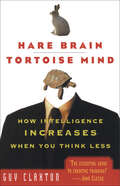- Table View
- List View
The Psychology of Revolution
by Gustave Le BonThe present age is not merely an epoch of discovery; it is also a period of revision of the various elements of knowledge. Having recognised that there are no phenomena of which the first cause is still accessible, science has resumed the examination of her ancient certitudes, and has proved their fragility. To-day she sees her ancient principles vanishing one by one. Mechanics is losing its axioms, and matter, formerly the eternal substratum of the worlds, becomes a simple aggregate of ephemeral forces in transitory condensation.
The Psychology of Socialism
by Gustave Le BonFirst published in 1899 during a period of crisis for French democracy, The Psychology of Socialism details Le Bon's view of socialism and radicalism primarily as religious movements. The emotionalism and hysteria of the period-especially as manifested during the Dreyfuss Affair-convinced Le Bon that most political controversy is based neither on reasoned deliberation nor rational interest, but on a psychology that partakes of contatgion andhysteria. Le Bon points to the irrationality of religion and uses the religiosity of socialism to debunk socialism as an irrational movement based on hatred and jealousy.
Wie Gedanken unser Wohlbefinden beeinflussen
by Gustave-Nicolas Fischer Virginie Dodeler Jutta BretthauerDa es wohl kaum jemanden gibt, der nicht gesund sein und sich wohlfühlen möchte, sind Wellness, Gesundheit wie auch das Verständnis von Faktoren, die uns krank machen, von entscheidender Bedeutung. Gustave Nicolas Fischer und Virginie Dodler stellen die wichtigsten 100 Aha-Experimente auf diesem Gebiet kurzweilig und anschaulich dar. Durch die daraus resultierenden erstaunlichen Entdeckungen wird jeder Leser den Einfluss der Psyche auf die Gesundheit noch besser verstehen. Dazu gibt es praktische Lösungsansätze zur Begleitung auf dem Weg zum physischen Wohlbefinden.
Pharmacological Treatment of Alzheimer's Disease: Scientific and Clinical Aspects
by Gustavo Alves Andrade dos SantosAlzheimer’s disease is the most prevalent form of dementia. Although it was discovered about a century ago, the first drugs applied in treatment were only introduced in therapy in the last 30 years.This book focuses on the clinical pharmacology of drugs that aim to delay the progression of Alzheimer’s disease, such as anticholinesterases and glutamate receptor antagonists, as well as treatment for the behavioral changes caused by the progression of the disease: antidepressants, antipsychotics, anxiolytics, and mood stabilizers.In addition, it describes important information about the pathophysiology and diagnostic methods of Alzheimer’s disease, emergency situations conditioned by the dementia process, and presents new perspectives for the treatment of Alzheimer’s disease. The ten chapters cover topics such as mechanism of action, dosage regimen, adverse reactions, drug interactions, toxicity profiles, among other information of clinical relevance. The work comprises evidence-based studies, providing a valuable resource for analyzing, prescribing and monitoring patients being treated for Alzheimer’s disease.Written by experts with solid professional experience, this book will appeal to pharmacologists, geriatricians, neurologists, psychiatrists, biomedical clinicians, and other healthcare professionals.
Health Disparities in Youth and Families
by Lisa J. Crockett Gustavo Carlo Miguel A. CarranzaAmid its growing diversity and shifting demographics, the U.S. is still home to glaring health inequities by race, ethnicity, and class. Yet while it is customary to identify poverty as their root cause, other complex mechanisms are involved in their perpetuation. Based on recent major studies on African-American, Latino, Asian-American, and Native American populations, Health Disparities in Youth and Families offers a thorough, nuanced examination of a wide range of causal--and protective--factors. Rigorous theories and models take into account cultural, contextual, and personal variables, including the roles of family identity, school, and neighborhood, and motivation toward health awareness (with attention paid to less frequently studied phenomena such as within-group inequalities and the Hispanic Health Paradox). Contributors approach their subjects with realism as well as optimism as the book: povides reliable information on the scope and etiology of health disparities, identifies the methodological and political challenges associated with this issue, proposes comprehensive, integrative models for understanding disparities, features examples of innovative programs for improving minority health, includes an in-depth chapter on substance use and mental health among Native American youth, offers a useful starting point for the exchange of ideas necessary to address health disparities. A provocative resource on a pressing social concern, Health Disparities in Youth and Families is necessary reading for health policy researchers, health care providers, and others dedicated to better health outcomes for all Americans.
Neuroscience of Stress: From Neurobiology to Cognitive, Emotional and Behavioral Sciences
by Gustavo E. TafetThis textbook provides an introduction to the interdisciplinary study of stress, helping students and professionals understand the main neurobiological and psychological causes and consequences of stress in human beings. It’s aimed at understanding the concept of stress at different levels, from the impact of environmental stressors to its processing in the brain, and from the neural mechanisms involved in this processing to the expression of different adaptive responses. All these neural mechanisms are clearly explained according to different levels of complexity, from the neurobiological level, including the cellular and molecular mechanisms, to the psychological level, including the cognitive and emotional processing, and behavioral expressions.The whole content is described in a very comprehensive manner, accompanied with descriptive graphics to clearly illustrate every detail, therefore allowing a full integration of all the covered concepts. In addition, clinical expressions of stress, such as mood and anxiety disorders, are also covered in detail, including an overview of different factors of vulnerability and resilience, therefore providing a unique and fundamental insight of this interdisciplinary field. Given its interdisciplinary approach, Neuroscience of Stress: From Neurobiology to Cognitive, Emotional and Behavioral Sciences will provide a comprehensive and clear introduction to the study of stress to students and professionals from different fields of the behavioral and health sciences. It will serve as a valuable text for adoption in classes of a wide range of graduate courses dealing with mental health and well-being, in areas such as health and clinical psychology, health promotion and disease prevention, psychiatry and behavioral medicine, among others.
Neurowissenschaften des Stresses: Von der Neurobiologie zu den Kognitions-, Emotions- und Verhaltenswissenschaften
by Gustavo E. TafetDieses Lehrbuch bietet eine Einführung in das interdisziplinäre Studium von Stress und hilft Studierenden und Fachleuten, die wichtigsten neurobiologischen und psychologischen Ursachen und Folgen von Stress beim Menschen zu verstehen. Es zielt darauf ab, das Konzept von Stress auf verschiedenen Ebenen zu verstehen, von den Auswirkungen von Umweltstressoren bis zu seiner Verarbeitung im Gehirn und von den neuronalen Mechanismen, die an dieser Verarbeitung beteiligt sind, bis zum Ausdruck verschiedener adaptiver Reaktionen. Alle diese neuronalen Mechanismen werden auf verschiedenen Komplexitätsebenen klar erläutert, von der neurobiologischen Ebene, einschließlich der zellulären und molekularen Mechanismen, bis zur psychologischen Ebene, einschließlich der kognitiven und emotionalen Verarbeitung und der Verhaltensäußerungen.Der Inhalt ist fundiert und wird von anschaulichen Grafiken begleitet, die Details sehr hilfreich verdeutlichen und somit eine vollständige Integration aller dargestellten Konzepte ermöglichen. Darüber hinaus werden klinische Ausdrucksformen von Stress, wie z.B. Stimmungs- und Angststörungen, ausführlich behandelt. Auch erhalten Sie einen Überblicks über verschiedene Faktoren der Anfälligkeit und Widerstandsfähigkeit, wodurch ein einzigartiger und grundlegender Einblick in dieses interdisziplinäre Gebiet geboten wird. Aufgrund seines interdisziplinären Ansatzes bietet Neuroscience of Stress: From Neurobiology to Cognitive, Emotional and Behavioral Sciences (Von der Neurobiologie zu den Kognitions-, Emotions- und Verhaltenswissenschaften) Studierenden und Fachleuten aus verschiedenen Bereichen der Verhaltens- und Gesundheitswissenschaften eine umfassende und klare Einführung in die Erforschung von Stress und ist bestens geeignet für den Einsatz in einer Vielzahl von Studiengängen, die sich mit psychischer Gesundheit und Wohlbefinden befassen, u. a. in den Bereichen Gesundheit und klinische Psychologie, Gesundheitsförderung undKrankheitsprävention, Psychiatrie und Verhaltensmedizin.
Wired Youth: The Online Social World of Adolescence (Adolescence and Society)
by Gustavo Mesch Ilan TalmudThis fully updated new edition offers a research-based analysis of the online social world of adolescence, incorporating additional research findings that have appeared during the last decade. Talmud and Mesch take a realistic, sociological approach to online adolescents’ communication, demonstrating how online sociability is embedded in the larger social structure and in technological affordances. Combining perspectives from sociology, psychology, and education with a focus on social constructionism, technological determinism, and social networking, the authors present an empirically anchored review of the field. The book covers topics such as youth sociability, relationship formation, online communication, and cyberbullying to examine how young people use the Internet to construct or maintain their inter-personal relationships. This new edition also incorporates new research findings on online adolescents' behaviour in general, and specifically in relation to social apps, providing a more updated outlook regarding various dimensions of adolescents' online interactions. Wired Youth is essential reading for advanced students of adolescent psychology, youth studies, media studies, and the psychology and sociology of interpersonal relationships, as well as undergraduate students in developmental psychology, social psychology, youth studies, media studies, and sociology.
Wired Youth: The Social World of Adolescence in the Information Age (Adolescence and Society)
by Gustavo Mesch Ilan TalmudThe debate on the social impact of information and communication technologies is particularly important for the study of adolescent life, because through their close association with friends and peers, adolescents develop life expectations, school aspirations, world views, and behaviors. This book presents an up-to-date review of the literature on youth sociability, relationship formation, and online communication, examining the way young people use the internet to construct or maintain their inter-personal relationships. Using a social network perspective, the book systematically explores the various effects of internet access and use on adolescents’ involvement in social, leisure and extracurricular activities, evaluating the arguments that suggest the internet is displacing other forms of social ties. The core of the book investigates the motivations for online relationship formation and the use of online communication for relationship maintenance. The final part of the book focuses on the consequences, both positive and negative, of the use of online communication, such as increased social capital and online bullying. Wired Youth is ideal for undergraduate and graduate students of adolescent psychology, youth studies, media studies and the psychology and sociology of interpersonal relationships.
Designing Democratic Schools and Learning Environments: A Global Perspective
by Linda F. Nathan Jonathan F. Mendonca Gustavo Rojas AyalaThis open access book explores democratic schools and learning environments globally. The book focuses on a newly developed framework for democratic education. The authors describe existing schools and concept schools—those that are ideas but not in operation. The first section includes the editors’ own journeys Pillar One includes schools that emphasize the open flow of ideas and choices, regardless of their popularity. Pillar 2 maintains that it is impossible to have a high quality education that ignores equity. Chapters explore how many diverse ‘marginalized’ communities experience education and some innovations that hold great promise for inclusion. Pillar 3 provides examples of schools where active engagement, consensus and compromise support the ‘common good.’ Pillar 4 investigates schools which organize students, parents, social institutions and the larger community collaboratively to achieve its goals and to solve theirs and society’s most urgent challenges.
Organizational Behavior: An evidence-based guide for MBA students
by Ning Hou James A. Tan Gustavo Valdez PaezThis book provides guidelines that students and professionals can relate to, pointing to relevant cases and methods. At the MBA Level, students have proven interested and seek further exploration of the concepts learned through college and their personal experiences in the field. As organizations become more diverse, there is a need to discuss and reference updated academic research on all seven major OB topics: Individual differences, motivation, teams, decision making, communication and conflict, leadership, and organizational processes. The book incorporates the post-pandemic perspectives on each topic. Example topics include personal value changes (chapter 2), challenges in motivation (chapter 3), virtual teams (chapter 4), decision making behavior forces during pandemic (chapter 5), zoom communication fatigue (chapter 6), leading in time of crises (chapter 7), and organizational change (chapter 8). This MBA guidebook will help students navigate the rapidly changing work landscape by tapping into some of the fundamental aspects of human behavior, allowing them to approach diverse human interactions from a more personal perspective.
12,000 Dreams Interpreted: A New Edition for the 21st Century
by Gustavus Hindman Miller Linda Shields Lenore SkomalA bestselling classic, back and bigger than ever! Nearly a century ago, Gustavus Hindman Miller published his groundbreaking masterwork, 10,000 Dreams Interpreted, the most compelling and thorough study of all the symbols that appear in our dreamscape. Miller offered an enlightening introduction to dream history and types, and organized his symbols into eminently logical categories. Now, popular psychic and medium Linda Shields has updated this classic, featuring revisions and additions to more than 2,000 of his original interpretations as well as 2,000 entirely new entries. This brings the book up to speed with our modern life, including objects unknown in Millers time, such as cell phones, computers, televisions, and more. An exciting, enriching, and elegantly packaged revision thats a must-have for anyone who dreams!
Ten Thousand Dreams Interpreted or What's in a Dream
by Gustavus Hindman Millerinterpretation of 10,000 dreams
Anthropology of the Brain
by Roger Bartra Gusti GouldIn this unique exploration of the mysteries of the human brain, Roger Bartra shows that consciousness is a phenomenon that occurs not only in the mind but also in an external network, a symbolic system. He argues that the symbolic systems created by humans in art, language, in cooking or in dress, are the key to understanding human consciousness. Placing culture at the centre of his analysis, Bartra brings together findings from anthropology and cognitive science and offers an original vision of the continuity between the brain and its symbolic environment. The book is essential reading for neurologists, cognitive scientists and anthropologists alike.
Unspoken: Toxic Masculinity and How I Faced the Man Within the Man
by Guvna BMen are bold. Men are brave. Men are strong in the face of fear. But what happens when that strength crumbles? Growing up on a council estate in East London, rapper Guvna B thought he knew everything he needed to know about what it means to be a man. But when a personal tragedy sent him reeling, he knew he had to face these assumptions head on if he was going to be able to overcome his grief. In this intimate, honest and unflinching memoir, Guvna B draws on his personal experiences to explore how toxic masculinity affects young men today. Exploring ideas of male identity, UNSPOKEN is an inspirational account of Guvna’s journey.
Außerfamiliäre Betreuung von Kleinkindern: Bindungstheoretische Hinweise für Therapeuten, Pädagogen und Pädiater (essentials)
by Martina Zemp Guy Bodenmann Peter ZimmermannDieses essential beleuchtet den aktuellen Kenntnisstand zur Inanspruchnahme öffentlicher Kindertagesbetreuung aus bindungstheoretischer Sicht. Es gibt Fachpersonen, die mit Familien arbeiten, einen Überblick und praktische Hinweise zum Thema. Die wissenschaftlichen Befunde zur Frage, ob die Betreuung in Kinderkrippen/Kitas negative Auswirkungen auf die kindliche Entwicklung hätte, sind inkonsistent. Die Folgen hängen von diversen Faktoren ab, u.a. von der Quantität und Qualität der außerfamiliären Betreuung und insbesondere von der Fürsorge und Feinfühligkeit der Eltern zu Hause. Bei guter Fürsorge kann die Eltern-Kind-Bindung aufrechterhalten werden. Dennoch ist die familienexterne Betreuung von Kleinkindern bindungstheoretisch nicht immer unproblematisch. Die Grundannahmen der Bindungstheorie bleiben in diesem Diskurs unumstritten und weiterhin hoch relevant.
Neue Medien und kindliche Entwicklung: Ein Überblick für Therapeuten, Pädagogen und Pädiater (essentials)
by Martina Zemp Guy BodenmannDieses Essential zeigt, welche Konsequenzen die Nutzung von Fernseher, Computer und Internet für Kinder und Jugendliche hat - und was Fachleute Eltern raten können. Aus wissenschaftlicher Perspektive wird deutlich, dass die Nutzung von gewaltbetonten Medien ein Prädiktor für aggressives Verhalten bei Heranwachsenden ist, neuen Medien ein Suchtpotenzial innewohnt und exzessive Mediennutzung den kindlichen Schulleistungen abträglich sein kann. Entscheidend sind jedoch die Häufigkeit der Nutzung und der Medieninhalt. Vor diesem Hintergrund stehen Eltern in der Pflicht, klare Strukturen bezüglich Form, Inhalt und Dauer der Mediennutzung ihrer Kinder durchzusetzen.
Partnerschaftsqualität und kindliche Entwicklung: Ein Überblick für Therapeuten, Pädagogen und Pädiater (essentials)
by Martina Zemp Guy BodenmannInternationale Befunde haben konsistent dargelegt, dass destruktive Paarkonflikte und Scheidungen zu den wichtigsten Risikofaktoren für eine ungünstige kindliche Entwicklung gehören. Für Kinder sind Störungen in der Partnerschaft der Eltern in hohem Maße bedrohlich und gehen im Falle einer Trennung der Eltern mit dem schmerzvollen Bruch des bisherigen Lebensentwurfs einher. Dies bedeutet in aller Regel ein hoch destabilisierendes Ereignis, welches von Kindern vielgestaltige Anpassungsleistungen abverlangt. Ermutigenderweise hat die gegenwärtige Paar- und Familienforschung Bedingungen identifiziert, wie Paarkonflikte und Scheidungen möglichst konstruktiv verlaufen - um der Partnerschaft und des Kindeswohls willen.
Attachment in Middle Childhood: New Directions for Child and Adolescent Development, Number 148 (J-B CAD Single Issue Child & Adolescent Development)
by Guy Bosmans Kathryn A. KernsOne of the critical factors in early development is the formation of a secure attachment, and it continues to be important for older children's responses to psychological stressors like hurt pride, fear, and sadness. This volume provides a timely review of research to date, describing important insights that have both theoretical and clinical importance as well as identifying remaining gaps in our understanding.Summarizing the most relevant findings, this volume is important for theory on child (attachment) development, and also for clinicians to broaden their understanding of the importance of middle childhood attachment processes for understanding the development of children’s behavior problems and for designing effective treatment strategies.This is the 148th volume in this Jossey-Bass series New Directions for Child and Adolescent Development. Its mission is to provide scientific and scholarly presentations on cutting edge issues and concepts in this subject area. Each volume focuses on a specific new direction or research topic and is edited by experts from that field.
Orchestrating Human-Centered Design
by Guy BoyThe time has come to move into a more humanistic approach of technology and to understand where our world is moving to in the early twenty-first century. The design and development of our future products needs to be orchestrated, whether they be conceptual, technical or organizational. Orchestrating Human-Centered Design presents an Orchestra model that attempts to articulate technology, organizations and people. Human-centered design (HCD) should not be limited to local/short-term/linear engineering, but actively focus on global/long-term/non-linear design, and constantly identify emergent properties from the use of artifacts. Orchestrating Human-Centered Design results from incremental syntheses of courses the author has given at the Florida Institute of Technology in the HCD PhD program. It is focused on technological and philosophical concepts that high-level managers, technicians and all those interested in the design of artifacts should consider. Our growing software -intensive world imposes better knowledge on cognitive engineering, life-critical systems, complexity analysis, organizational design and management, modeling and simulation, and advanced interaction media, and this well-constructed and informative book provides a road map for this.
Teaching Fractions through Situations: A Fundamental Experiment
by Virginia Warfield Nadine Brousseau Guy BrousseauThis work presents one of the original and fundamental experiments of Didactique, a research program whose underlying tenet is that Mathematics Education research should be solidly based on scientific observation. Here the observations are of a series of adventures that were astonishing for both the students and the teachers: the reinvention of fractions and of decimal numbers in a sequence of lessons and situations that permitted the students to construct the concepts for themselves. The book leads the reader through the highlights of the sequence's structure and some of the reasoning behind the lesson choices. It then presents explanations of some of the principal concepts of the Theory of Situations. In the process, it offers the reader the opportunity to join a lively set of fifth graders as they experience a particularly attractive set of lessons and master a topic that baffles many of their contemporaries.
The Joy of Work?: Jobs, Happiness, and You
by Guy Clapperton Peter WarrAre you happy at work? Or do you just grin and bear it? We spend an average of 25% of our lives at work, so it’s important to make the best of it. The Joy of Work? looks at happiness and unhappiness from a fresh perspective. It draws on up-to-date research from around the world to present the causes and consequences of low job satisfaction and gives helpful suggestions and strategies for how to get more enjoyment from work. The book includes many interesting case studies about individual work situations, and features simple self-completion questionnaires and procedures to help increase your happiness. Practical suggestions cover how to improve a job without moving out of it, advice about changing jobs, as well as how to alter typical styles of thinking which affect your attitudes. This book is unique. The subject is of major significance to virtually all adults - people in jobs and those who are hoping to get one. It is particularly distinctive in combining two areas that are usually looked at separately – self-help approaches to making yourself happy and issues within organizations that affect well-being. The Joy of Work? has been written in a relaxed and readable style by an exceptional combination of authors: a highly-acclaimed professor of psychology and a widely published business journalist. Bringing together research from business and psychology – including positive psychology – this practical book will make a big difference to your happiness at work – and therefore to your whole life.
Cognitive Psychology: New Directions (Psychology Revivals)
by Guy ClaxtonOriginally published in 1980, this title was designed to present key topics in cognitive psychology to university and college students in a way that drew out the main ideas behind those topics, this book also shows how these ideas were likely to develop over the following years. Its special characteristics are its efforts to anticipate the most fruitful lines of development and to integrate a number of different authors’ opinions about where the strengths and weaknesses of cognitive psychology lie. At the time the contributors were in the main younger lecturers in cognitive psychology who were, through their own research, actively engaged in bringing new directions into being.The volume will still be of interest to cognitive psychologists in general who wish to reflect on what the field was, and who are concerned about the conceptual and methodological growth points in the discipline. In addition to chapters with familiar headings, such as attention, remembering and problem-solving, the book also contains contributions on cross-cultural cognition and on action, as well as two complementary overviews of cognitive psychology as a whole. Today it can be read in its historical context
Growth Points in Cognition (Psychology Revivals)
by Guy Claxton‘Cognition’ is not so much a field as a forest. It presents the newcomer with an immense wealth of detail: theories, models, terms and findings that are entangled and sometimes seemingly impenetrable. There is plenty of new growth – of which some will thrive and some will not. And a lot of dead wood too, some recognised and some not. How is the student to begin to make sense of all this?Originally published in 1988, Growth Points in Cognition provided a much-needed perspective, presenting those key topics in cognitive psychology that were likely to shape the development of the subject over the next decade. The contributors discuss important areas of cognition such as perception, action, memory, comprehension and problem-solving, and examine the increasingly fruitful interplay between cognition and the allied fields of neuropsychology, cross-cultural psychology, and development. Today it can be read in its historical context.
Hare Brain, Tortoise Mind: How Intelligence Increases When You Think Less
by Guy Claxton“Backs up anecdotal studies of creativity with up-to-date Information about the latest research into brain function . . . a fascinating book.” —Anthony Storr, author of Solitude: A Return to SelfIn these accelerated times, our decisive and businesslike ways of thinking are unprepared for ambiguity and paradox, and we’ve lost our appreciation for the value of “sleeping on it.” We assume that the quick-thinking hare brain will beat out the slower intuition of the tortoise mind. But new research in cognitive science is changing this understanding of human mental processes. It suggests that patience and confusion—not rigor and certainty—are the essential precursors of wisdom.With a compelling argument that the mind works best when we trust our unconscious, or “undermind,” psychologist Guy Claxton makes an appeal that we be less analytical and let our creativity have free rein. He also encourages reevaluation of society’s obsession with results-oriented thinking and problem-solving under pressure. Packed with interesting anecdotes, a dozen puzzles to test your reasoning, and the latest related research, Hare Brain, Tortoise Mind is an Illuminating, uplifting, stimulating read that focuses on a new kind of well-being and cognition.“The essential guide to creative thinking.” —John Cleese“His multidisciplinary approach is beautifully executed.” —Kirkus Reviews“Counterintuitive . . . provocative . . . While Claxton speaks the language of cognitive science, his ideas resonate with Freud’s description of the unconscious, Buddhist concepts of the divine ground of existence and the great Romantic poets’ notions of the fount of creativity.” —Publishers Weekly
